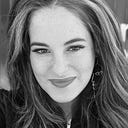Pantone has a ‘Color of the Year’? Why’s that a thing?
My name is Tiffany. This is why it pleases me no end to know that the custom colour — that delicious shade of robin-egg greeny-blue — that is associated with luxury jewellery brand Tiffany & Co is called ‘PMS 1837 Blue’.
In 2001 Tiffany & Co approached Pantone, the global authority on colour and the creator of the Pantone Color Matching System, to standardise its iconic and trademarked blue.
As a result, no matter where you are in the world, or which medium that particular colour appears in — on a billboard, in a magazine, in store signage, or on a tiny square box with glorious sparklies inside — it is instantly recognisable (Laughing Samurai, 2018).
There is, as it happens, an official way to set the standard for consistency when reproducing colour. This makes sense, if you want your ‘Whimsical Poppy’ logo to look the same in Durban as in Dallas, Denmark and Doha.
But why does Pantone announce an annual ‘Color of the Year’, where does it come from, what’s this year’s unique hue, and how does this affect your life?
Colour is a ‘thing’.
Individuals across the globe are becoming increasingly fascinated with colour, realising the extent to which it conveys meaning and recognising it as a way to express the attitudes, emotions, and culture of a period in time.
Then there’s Pantone.
The 20-person team behind the Pantone Color Institute (PCI) begins global research early in spring, looking for recurring colour patterns in daily life situations. Twice a year it hosts a secret meeting with representatives from various nations’ colour standards groups and, after two days of engagement, they choose a colour for the following year. Start to finish, the process takes nearly nine months to wrap up (Korzenowski, 2018).
Which comes first: the chicken or the colourful egg?
Does the design world take note of Pantone’s annual prediction, yielding that colour’s widespread use across fashion, interiors and design over the next year? Or, does Pantone forecast a shade that’s already ‘out there’ — even if people aren’t aware of it?
Pantone’s executive director, Leatrice Eiseman, claims the latter. She explains that the Color of the Year is not meant to be a declarative statement about the colour trend everyone should wear or buy into.
Instead, it’s emblematic of the zeitgeist: “…a colour snapshot of what we see taking place in our global culture that serves as an expression of a mood and an attitude” (Pantone Color Institute, 2018).
Whichever the catalyst, the PCI has made a prediction every December for the last 18 Decembers and, so far, every prediction has come true.
Eiseman adds, “We look for ascending colour trends, colours that are being used in broader ways and broader context than before. We look at leading indicators, such as art, entertainment and technology. We go through the fashion collections to see how many times a particular colour is on the agenda. We consider the artists and exhibitions that are gaining attention. We even look at food and drink trends” (Pantone Color Institute, 2018).
But the largest indicator is the mood of the people: “There is a magical element that colour represents to people, whether or not they realise it,” says Eiseman. “Because we’re colourists, we see the clues. Then we get the conversation going, and start to open people’s consciousness to the colour.”
Is Pantone just in it for the bucks?
No, says Laurie Pressman, VP of the PCI: “This isn’t a business generator. It’s really about thought leadership — talking about colour and understanding the role colour plays in culture. We’re not selling a paint or a fabric; we’re looking at the macro world (Pantone Color Institute, 2018).”
To be fair, Pantone doesn’t sell colours and if you buy anything that’s Whimsical Poppy-coloured, neither Pantone nor the PCI earns a profit.
Color in your life
According to Velarde (2018), the annual investigation conducted by the PCI can save you countless hours of marketing research for your business.
For instance, when the new colour is announced in December, you and/or your designers can look into how to incorporate it into your organisation — products, ranges, designs, communication, even advertising.
Because the Color of the Year is a forecast directed at the consumer, it can make your business look and feel current and fresh in the audience’s mind.
Bottom line, consumers want colours that look good and make them feel happy, and those associations are constantly evolving. The colour trends that were all the rage 15 years ago now look tired and dull — consider ‘beige’, that colour of all mothers-in-law, according to my mother-in-law.
So, while we may have minimal interest now in the shade we’ll be desperate for in five years’ time, it’s likely to resemble Pantone’s Color of the Year 2026. Which I’m secretly hoping is PMS 1837, also known as ‘Tiffany Blue’.
